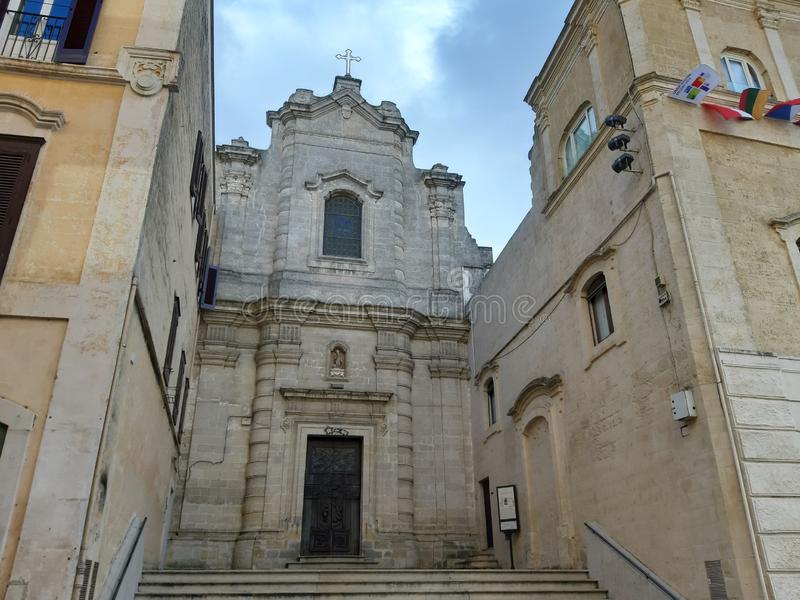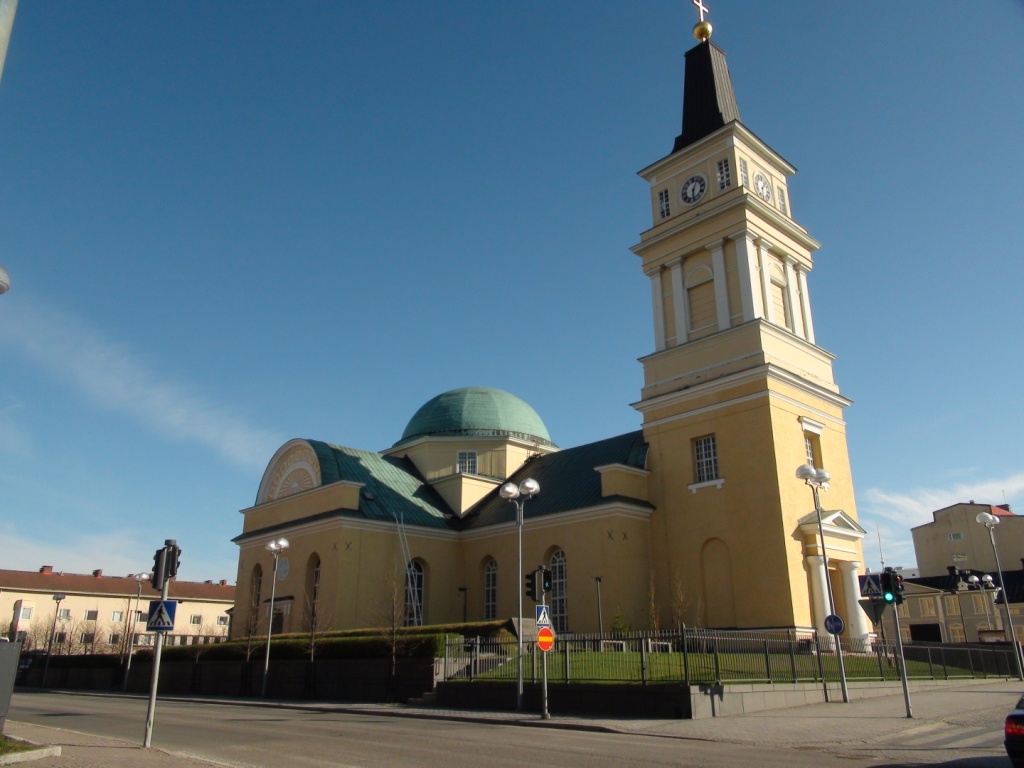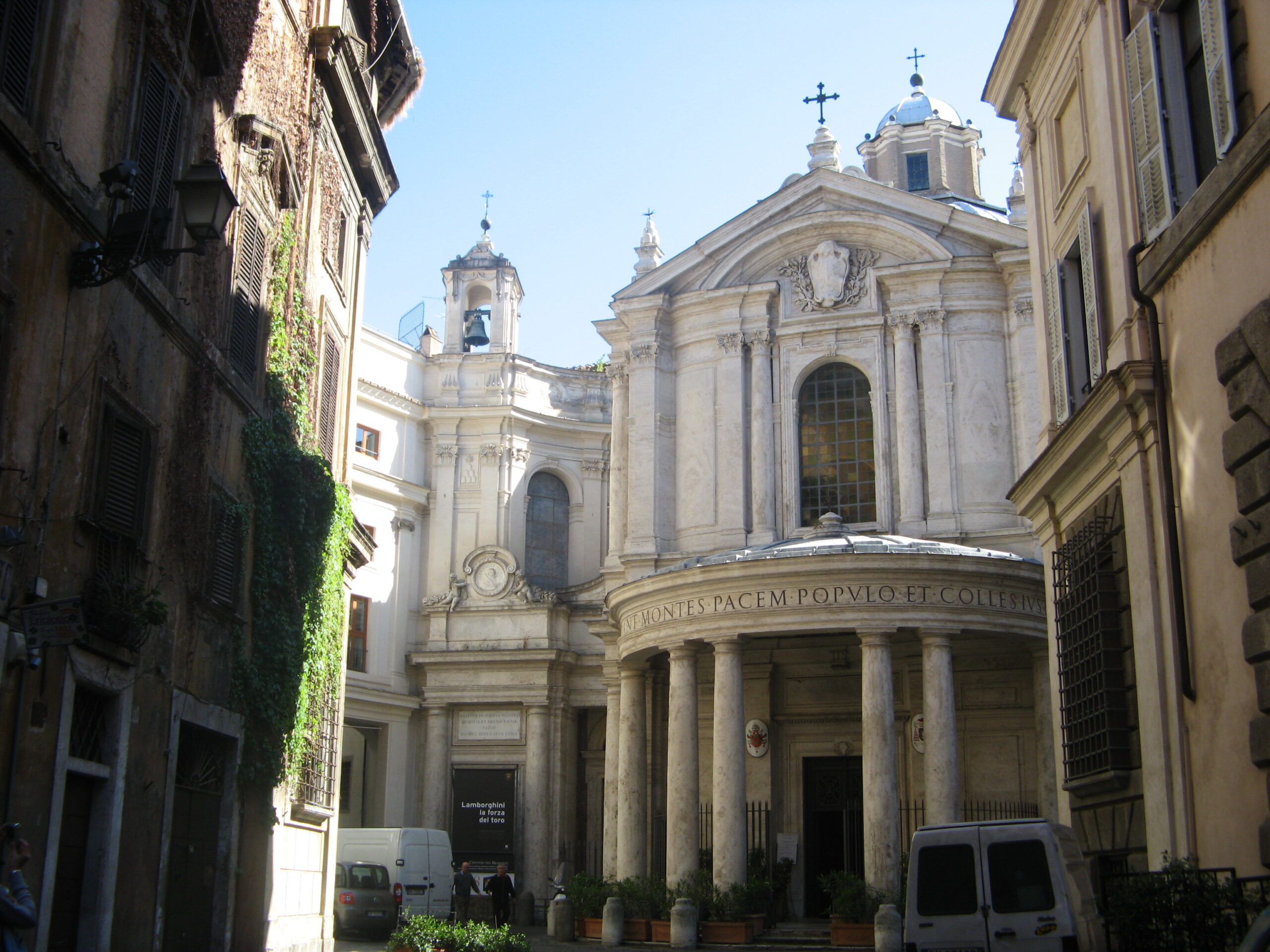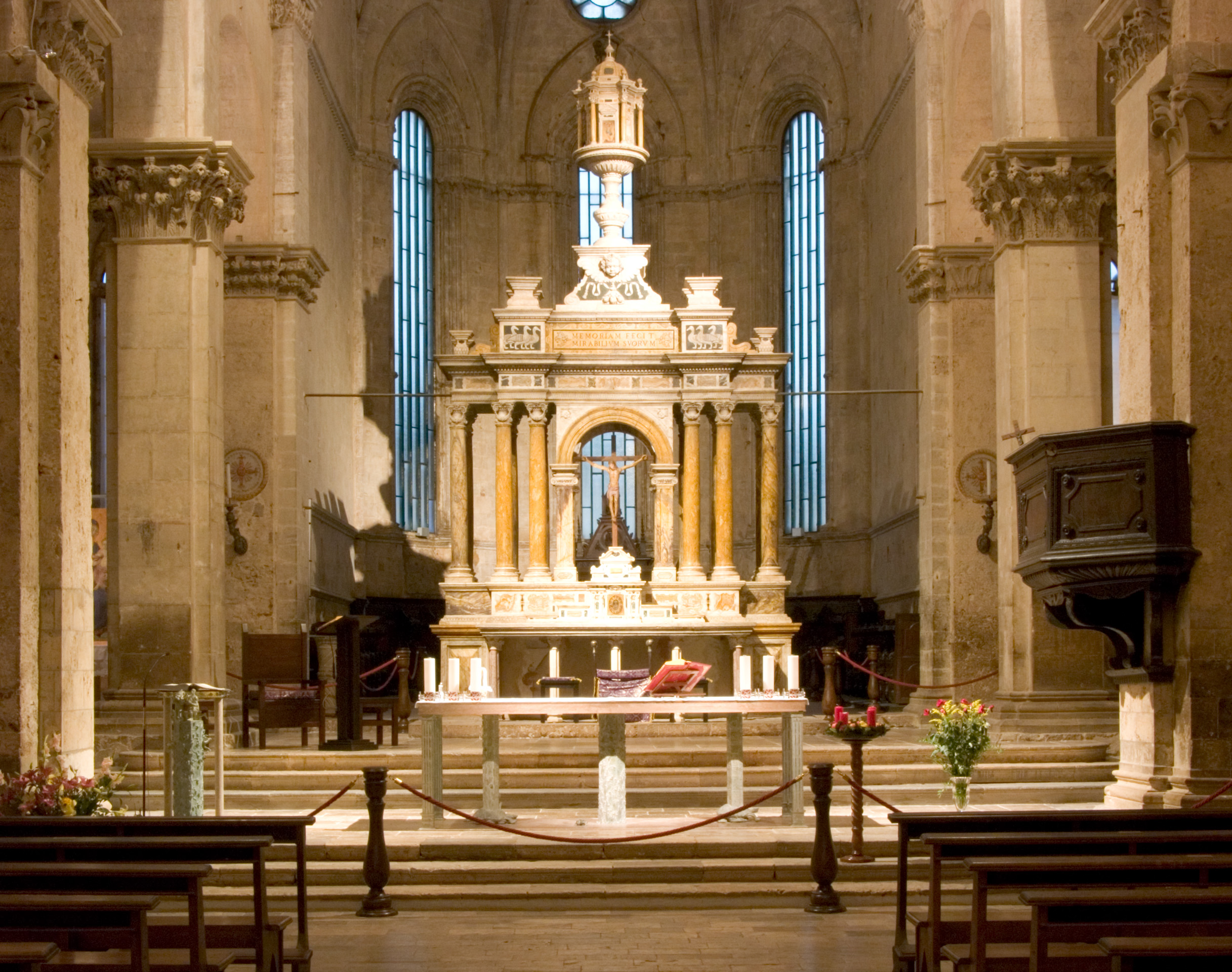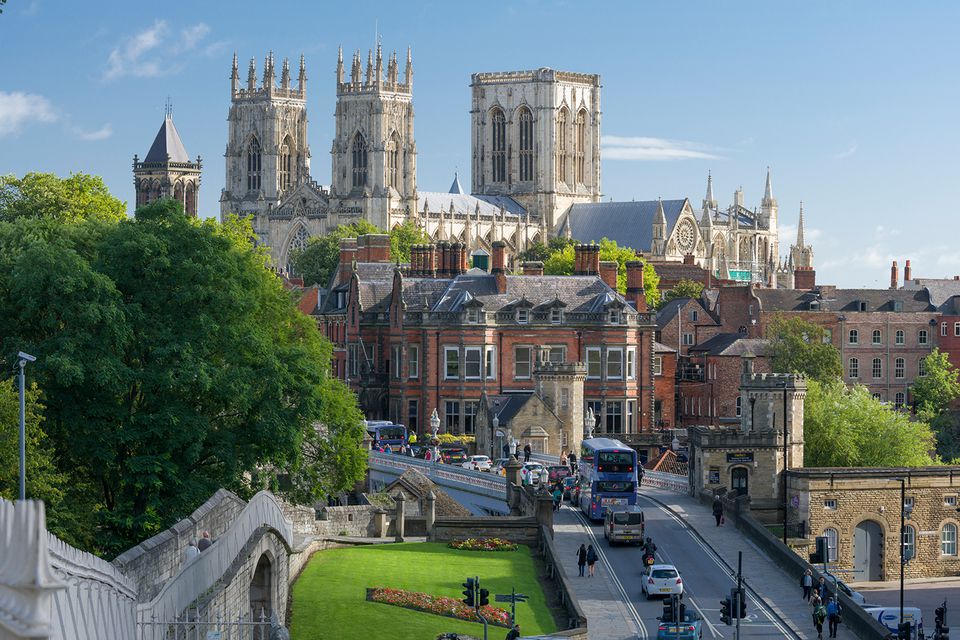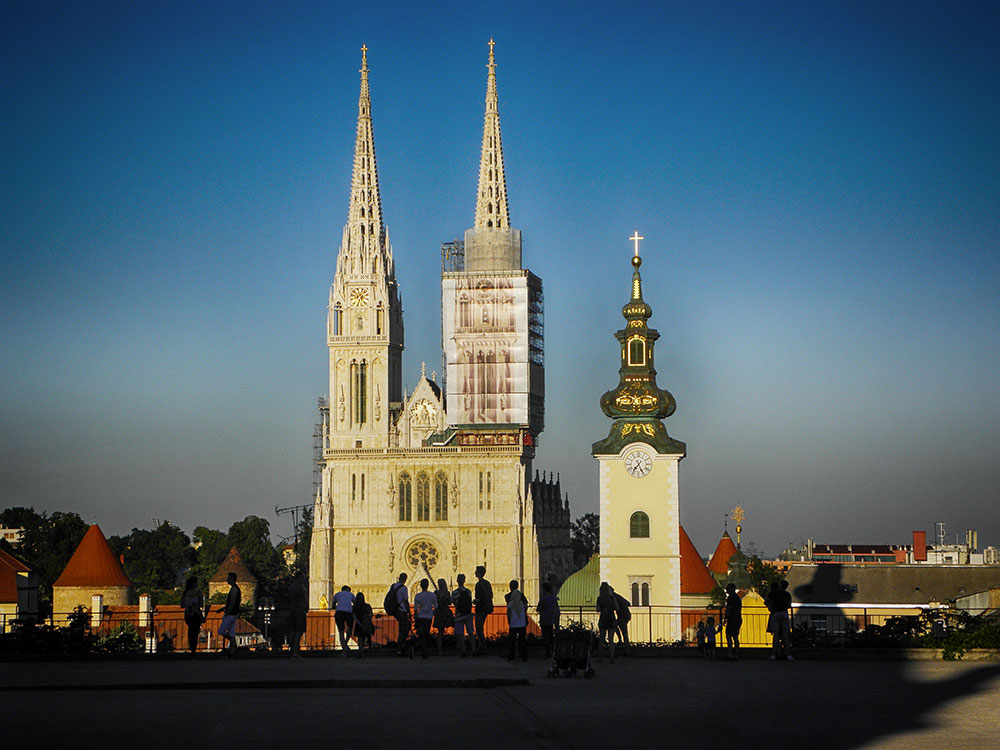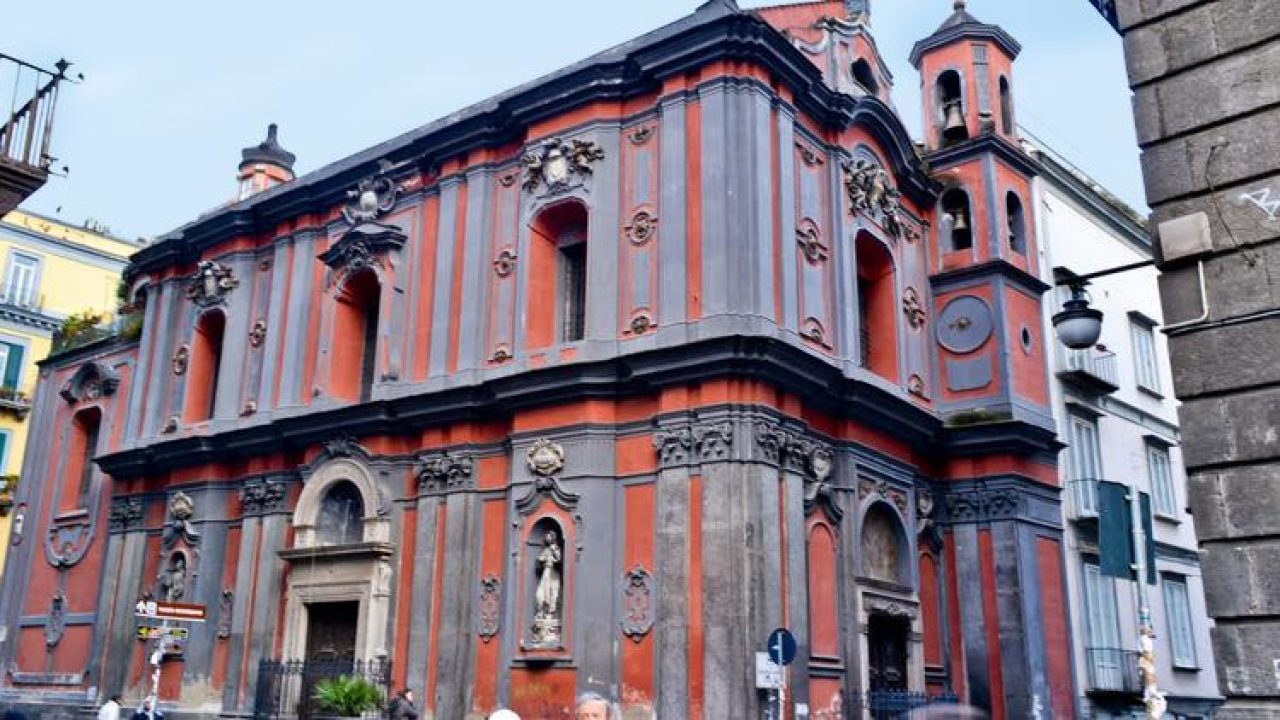In 1283 the nuns moved from the original site, located outside the ancient city walls, to a new monastery inside them, built on a rock jutting out over the Gravina near the eastern city gate; this complex is known as Santa Lucia alla Civita. The church has been destroyed while the monastery, recently restored, is in a good state of preservation; among the elements that compose it stands out the Renaissance portal.
The nuns abandoned this site towards the end of the eighteenth century, due to the harsh environmental conditions in which they lived.
The new church and the new monastery were built on the Piano next to the Ferdinandea Fountain, hence the name Santa Lucia alla Fontana.
The access to the church is mediated by a staircase restored in recent years. The facade has very simple decorative elements; it is divided into two parts by a stringcourse cornice: in the upper part there is a stained-glass window embellished by a mistylinear arch that recalls the end of the facade itself. In the lower part there is a niche that houses a statue of St. Benedict above the portal. The bell-tower is inspired by the decorative motifs of the facade.
The interior has a single nave, includes four altars and several works of considerable value and workmanship.
The final closure of the monastery dates back to 1938, the year in which the last member of this community died; the church still continues to perform its liturgical functions.
